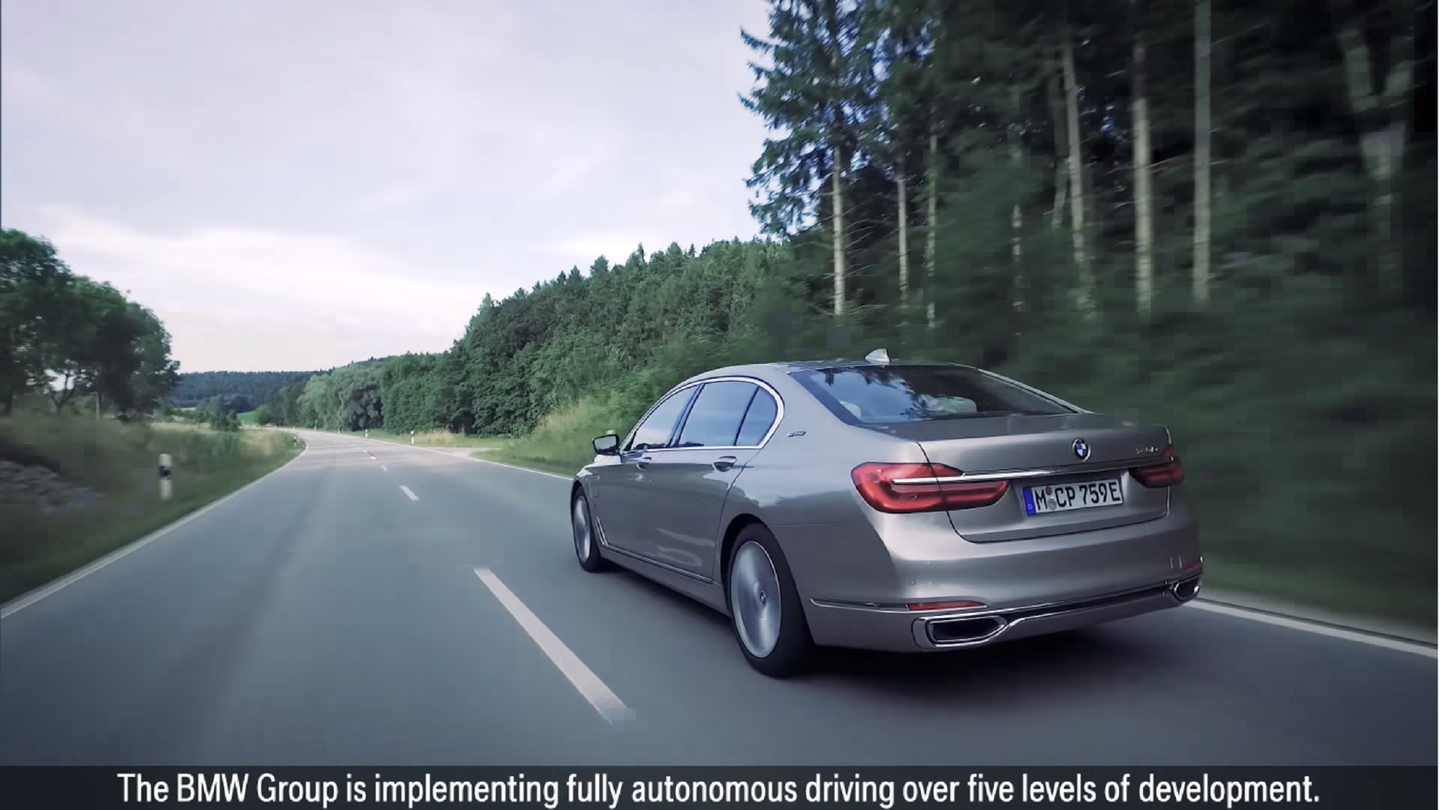Watch BMW Explain the Five Levels of Autonomous Driving
“Level 5” autonomy should start reaching select cities in the year 2020, but what does that even mean?

The era of the self-driving car is upon us. Whether you trust them or not, robots will soon replace truckers, cabbies, chauffeurs, and yes, even Uber drivers in the pursuit safer and more efficient roads. One piece of jargon that's thrown around when talking about autonomous driving are the five 'levels' of autonomy—namely and intuitively, levels 1 to 5. If you assumed the higher the number, the less driver involvement required, you'd be right. Breaking down exactly what each of the five levels look like and how they work, BMW has put together this nifty video.
Today's autopilot systems from Tesla et al. are of the level 2 variety where the driver can take their hands off the wheel periodically, but is required—or strongly recommended, at least—to keep their eyes on the road and still pay attention in case they need to quickly intervene. At level 3, the driver doesn't necessarily have to constantly pay attention, but must be able to take back the wheel "on short notice." In other words, feel free to stare at your phone (and read articles at The Drive) while the car drives itself, but maybe keep sitting in the captain's chair while you do so.
One level up from that, BMW says occupants can now take naps on their commute, but must be physically and mentally fit to drive in case they are required for "specific sections of the journey." Catch up on some much needed sleep while dropping your kids off at school, provided your kids' school isn't on a camera-scrambling dirt road or something.
Level 5 autonomous cars finally do what countless science fiction movies have promised they would. Catch up on some much needed sleep while dropping your kids off at school, from the comfort of your own bed.

